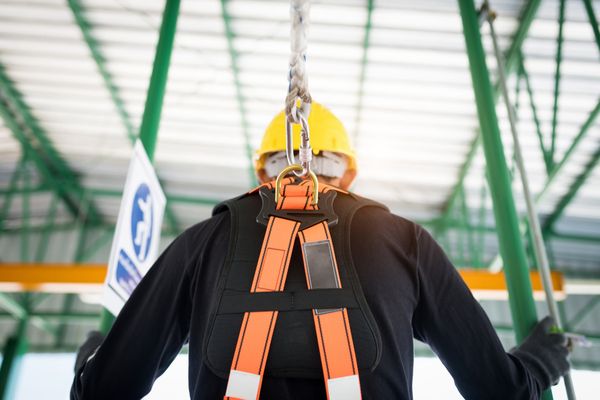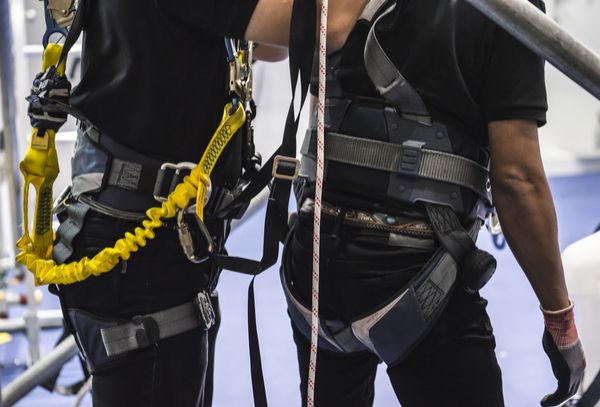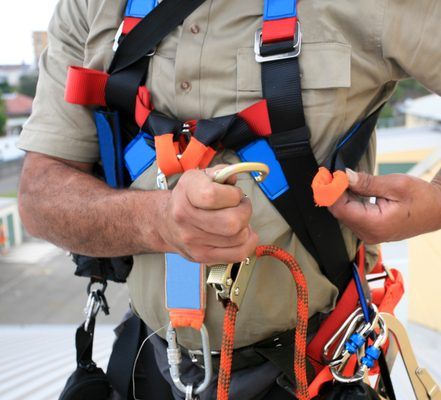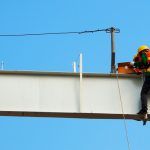
Working At Heights Safety Training FAQ

Working at heights provides some of the biggest risks for workplace injuries when best practices are not followed. It is vital to protect workplace accidents by ensuring everyone on the worksite is properly trained and adhering to Ontario’s working at heights regulations. We have compiled some of the more common questions here.
What is a working at heights certificate required for?
You must hold a working at heights to be approve for working with any form of fall protecting including:
- A travel restraint system
- A fall restricting system
- A fall arrest system
- A safety net
- A work belt
- A safety belt
How do I get a working at heights certificate?
Whether you are renewing or receiving your first working at heights certificate, you must attend training from a CPO approved training provider as designated by the Chief Prevention Officer. Typically, your employer will help workers organize training sessions. The employer must keep a record of all workers and their training history and certificate status.
 How long is working at heights certificate valid for in Ontario?
How long is working at heights certificate valid for in Ontario?
A working at heights certificate of training is valid for three years from the date of successful completion of the training program. Upon expiry, a worker must pass an CPO approved refresher training course.
How do I register for working at heights training?
Book a course online at an CPO approved training provider for working at heights training. Approved training providers will supply the relevant paperwork for confirming completion (certificate of completion/ROT).
Who needs working at heights training?
Those performing work at heights of course, but also those charged with supervision or management of those workers. A supervisor should also be attending refresher courses as required.
What is involved in a working at heights training course?
There are two components involved with an eight hour working at heights course. A theoretical section and a practical section. The theoretical component ensures workers understand:
- The legislative requirements for working at heights
- Duties of workers and supervisors
- Potential hazards
- Methods of fall protection
- Warning methods
- Ladder and scaffolding safety
- The requirements for the formulation and implementation of a rescue plan
The practical component ensures workers can demonstrate understanding and competency for:
- Harness fit testing
- How to install a rope grab on life lines
- Proficiency in tie-off techniques
- How to use a beam strap for securing an anchor point
What is involved in refresher training?
The purpose of refresher training is to make workers aware of any changes in best practices or regulatory requirements that may have changed during their last training while reinforcing key learning goals. Fall arrest methods are covered and practical demonstrations of knowledge and competency of using these methods are required. A written test is also conducted.
ADVANCED CONSULTING & TRAINING OFFERS CPO APPROVED WORKING AT HEIGHTS TRAINING
 A safe work place is crucial and ensuring that you have the right safety procedures and policies for things such as WHMIS-GHS, first aid CPR, Competent Supervisor, and Working At Heights can create a great work environment that is safe and productive. Since Advanced Consulting and Training Ltd.’s founding, their diverse team of certified health and safety professionals have taken great pride in their ability to deliver prompt, cost-effective and relevant workplace health and safety solutions. As a CPO approved, TSSA accredited, and WSIB approved provider, we look forward to discussing how ACT can help with your company’s safety requirements. Contact us today for more information relating to safety consulting and courses such as:
A safe work place is crucial and ensuring that you have the right safety procedures and policies for things such as WHMIS-GHS, first aid CPR, Competent Supervisor, and Working At Heights can create a great work environment that is safe and productive. Since Advanced Consulting and Training Ltd.’s founding, their diverse team of certified health and safety professionals have taken great pride in their ability to deliver prompt, cost-effective and relevant workplace health and safety solutions. As a CPO approved, TSSA accredited, and WSIB approved provider, we look forward to discussing how ACT can help with your company’s safety requirements. Contact us today for more information relating to safety consulting and courses such as:


